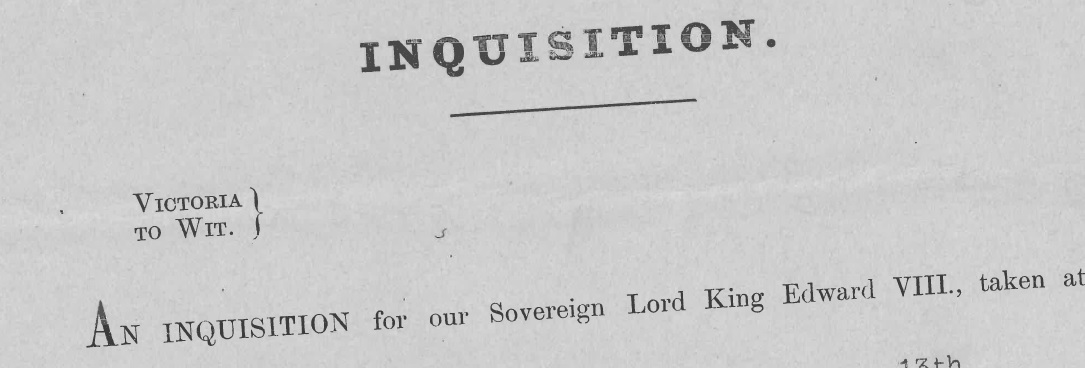Last updated:
What do I need to know?
You need to know an approximate year of death, and the name/s of the deceased. Not all deaths resulted in an inquest. However, records of a post-mortem and initial investigation may be available - consider searching through the Body Cards as well.
Inquest records up to the year 1937 have been digitised and can be viewed online. Inquest records from 1938 onwards are not digitised and can only be viewed in the reading room after you place an order.
How do I search?
Enter a name and/or year and/or keyword in the search box below. Some earlier inquests can be viewed online, but most need to be viewed in the reading room.
About these records
An inquest is a legal inquiry held to establish the exact medical cause of death of an individual in certain circumstances. Where the inquest found a death was the result of a crime, it could also commit an accused for trial.
The inquest records relate to deaths that occurred when a person died suddenly, was killed, died whilst in prison, drowned, died whilst a patient in an asylum, or was an infant ward of the state and died under suspicious circumstances, among other circumstances.
We hold inquest records up until 2003. Some earlier date ranges have been digitised and can be viewed online, but most have not. Records up until 1985 are on open access. From 1986 onwards the records are closed to public access. To access these records you will need to make a request to the Coroners Court.
If you are just interested in more recent records, coroners' written findings can be searched and accessed online via the Coroners Court website. Coroners' written findings are published when an inquest has been held, recommendations have been made, or a coroner orders that they are published. Please note that these are not the same as full inquest files.
Next Steps
What are in these records?
The content of the records varies over time. Each file may contain:
- the Coroner’s verdict on the cause of death
- names of the jurors
- depositions of evidence given by witnesses called
- a copy of the Victoria Police report
- exhibits, photographs, copies of autopsy reports and other medical reports (these are more common from the 1950s onwards).
WARNING The photographs in these records can be upsetting for some researchers. Spaces are available in our reading room for people who wish to view inquest records in private.
Material in the Public Record Office Victoria archival collection contains words and descriptions that reflect attitudes and government policies at different times which may be insensitive and upsetting
Aboriginal and Torres Strait Islander Peoples should be aware the collection and website may contain images, voices and names of deceased persons.
PROV provides advice to researchers wishing to access, publish or re-use records about Aboriginal Peoples
